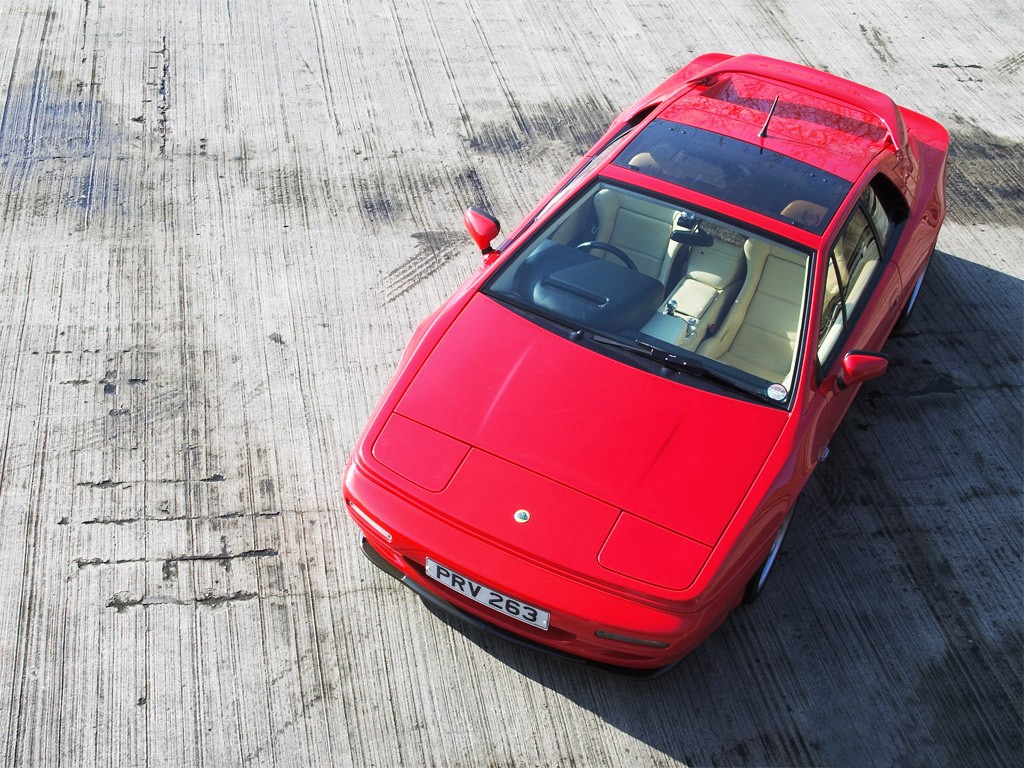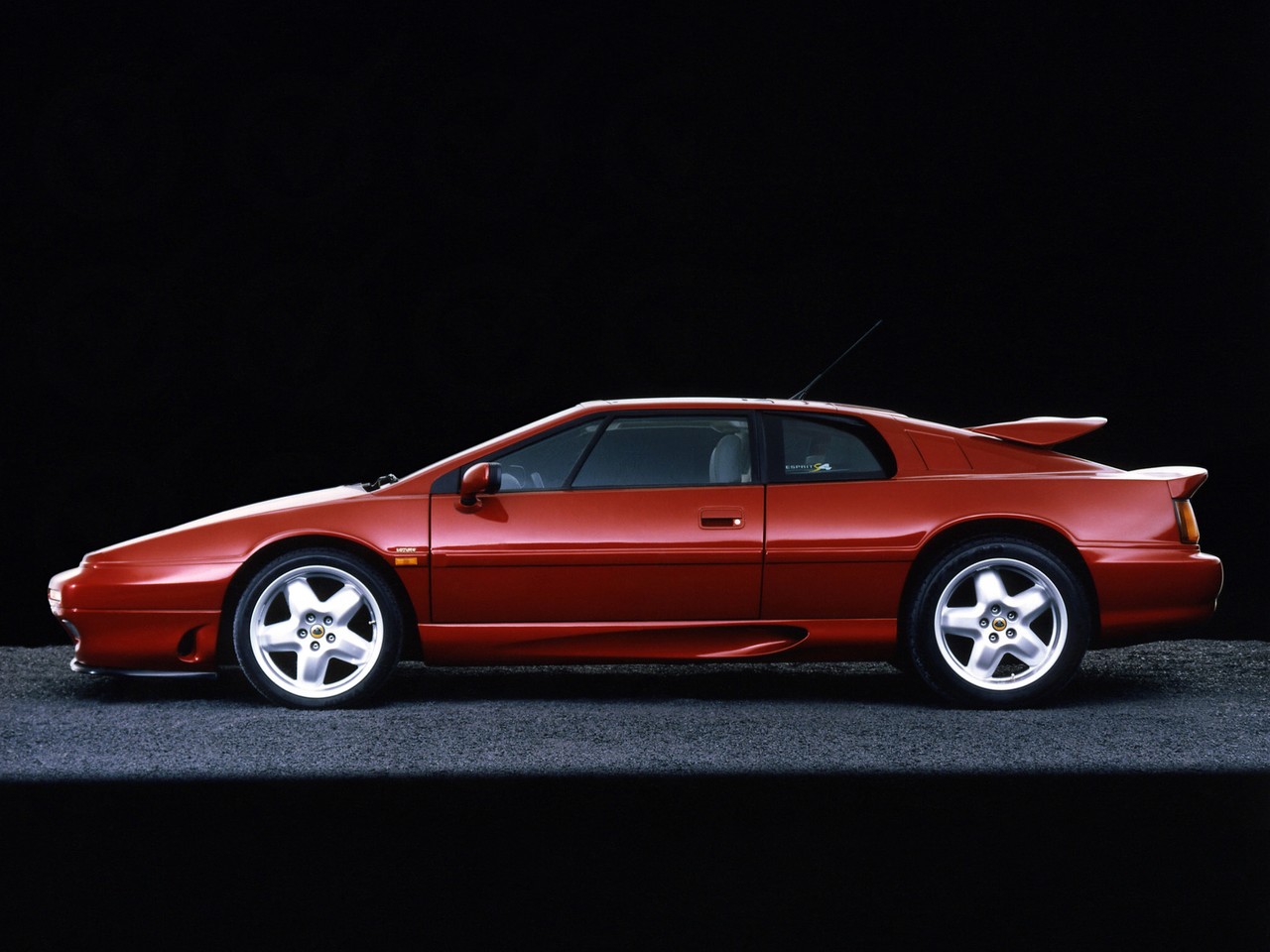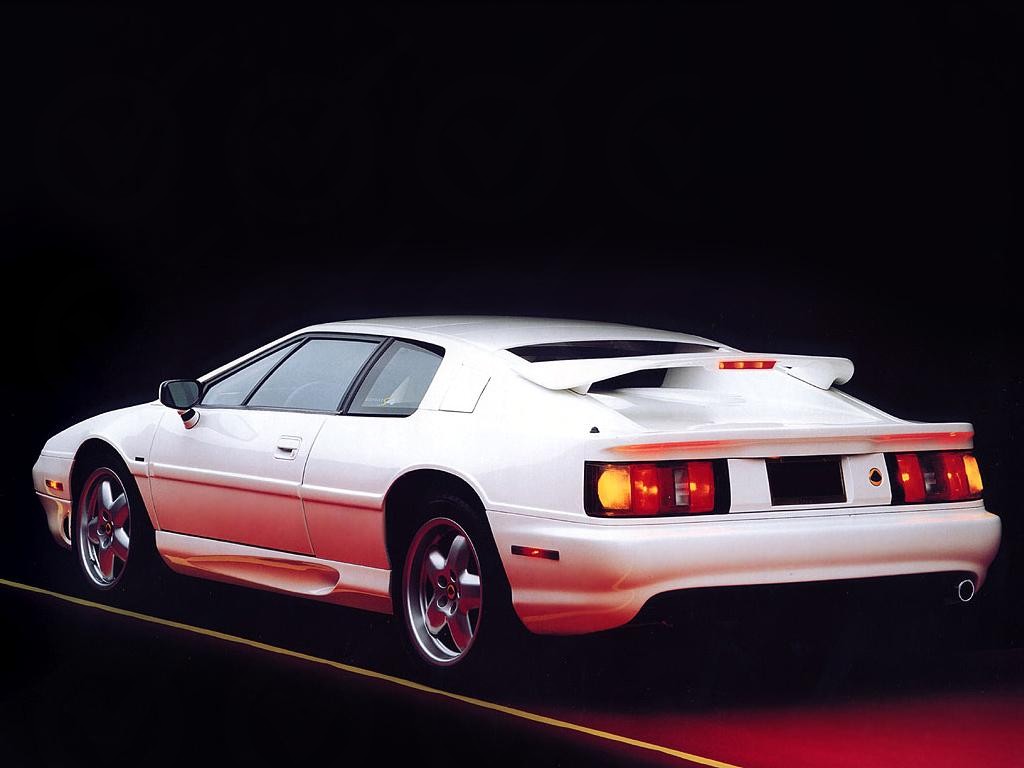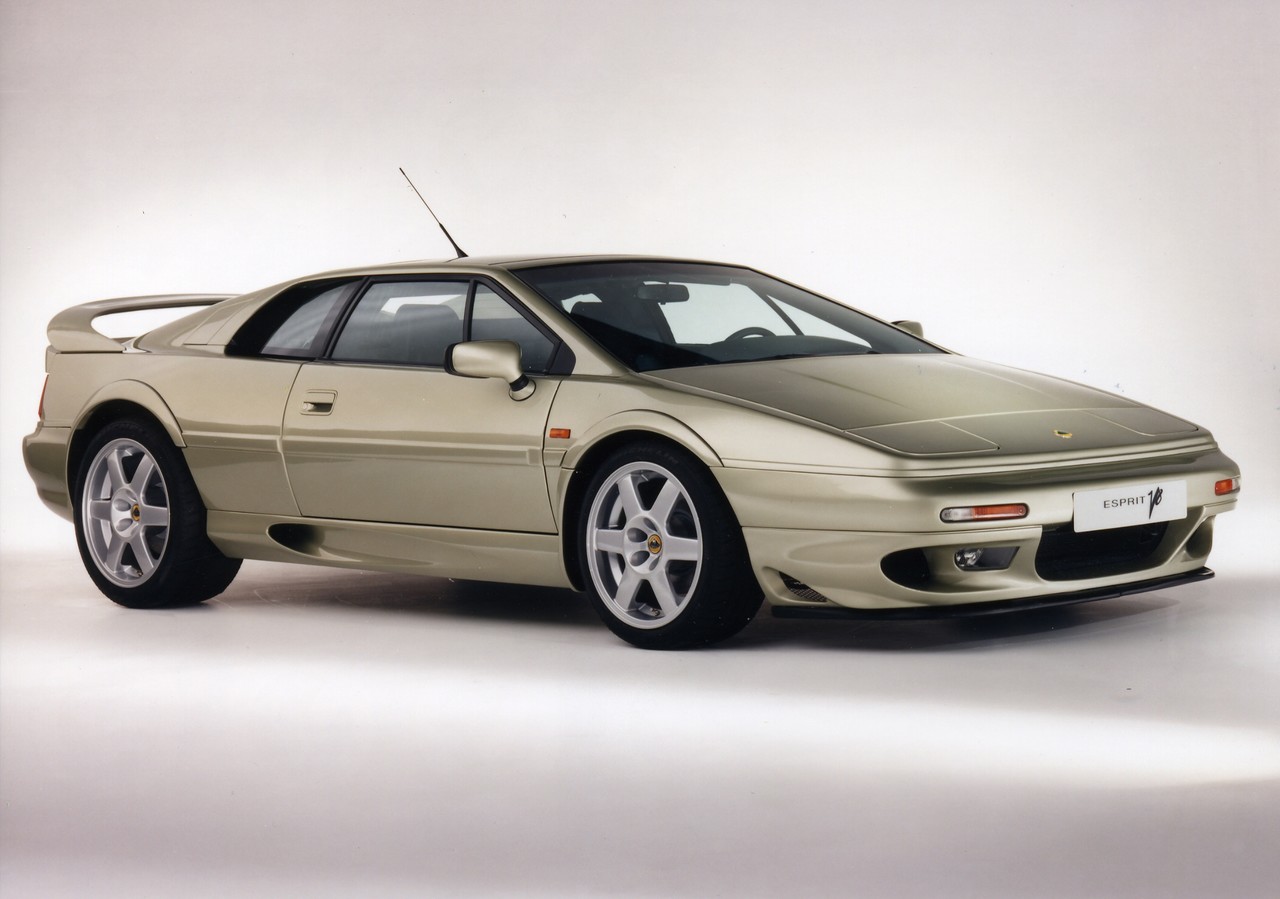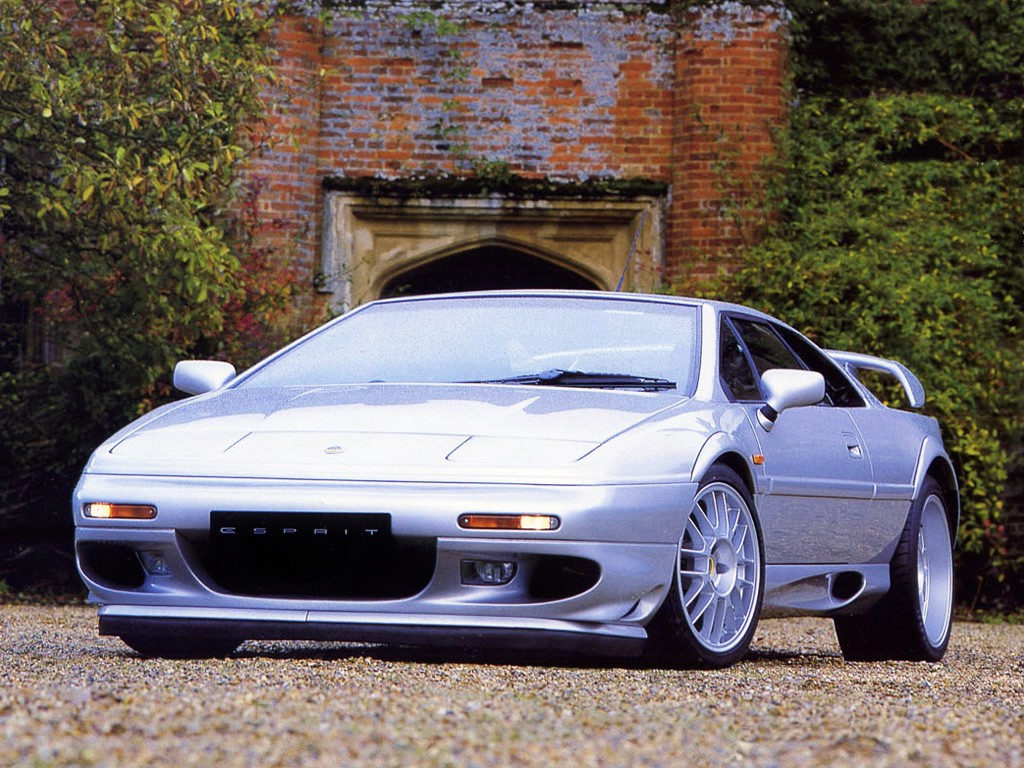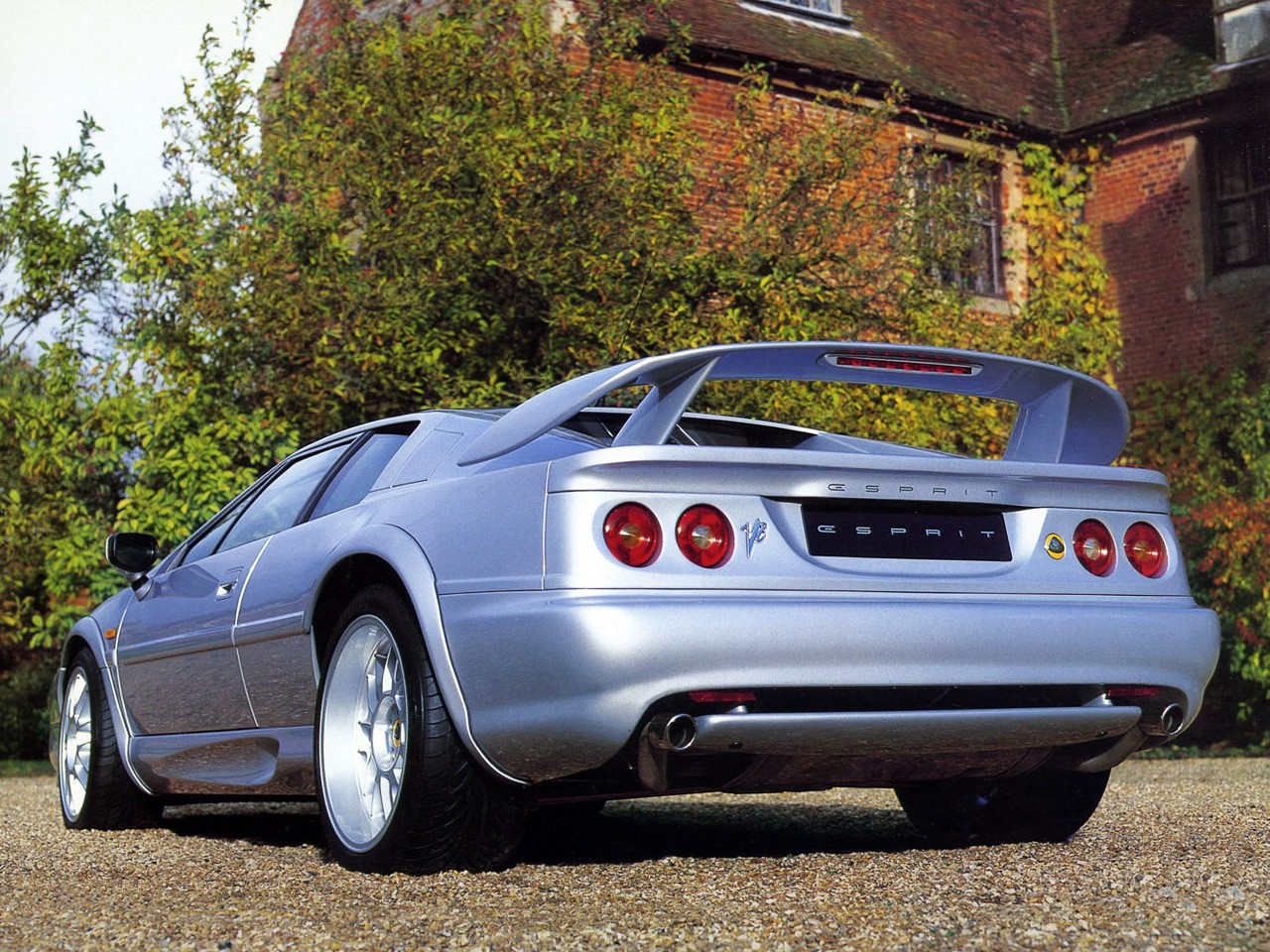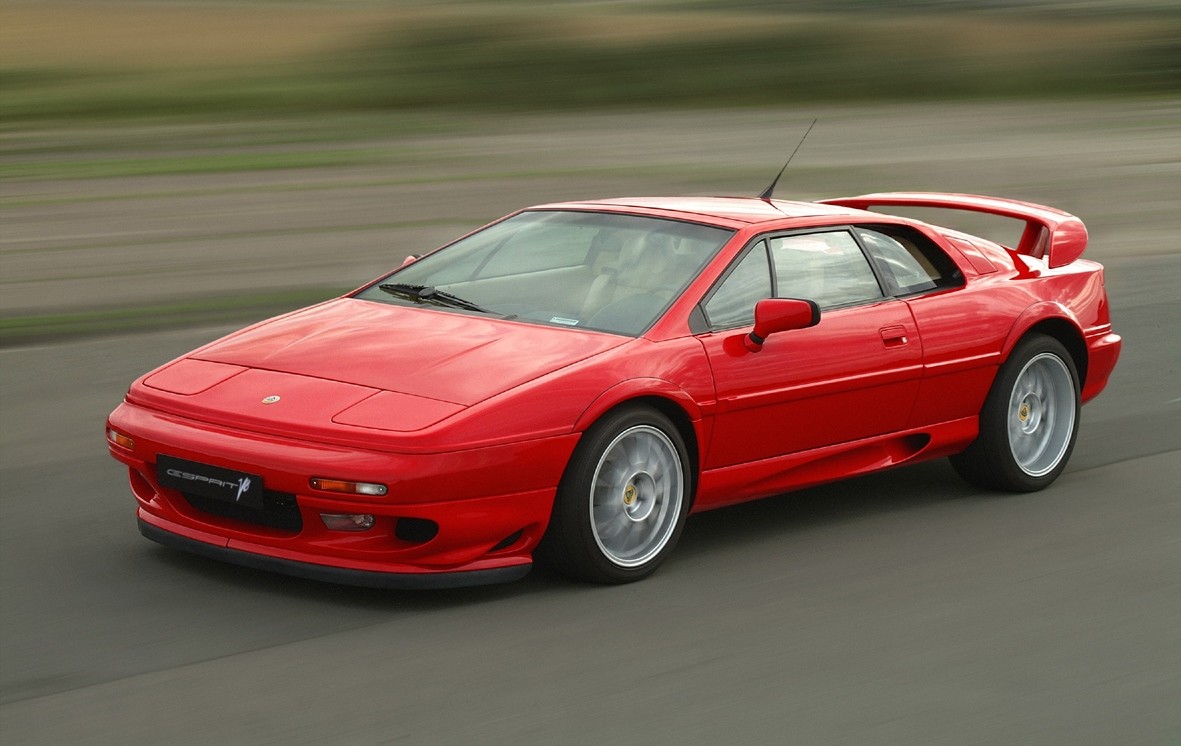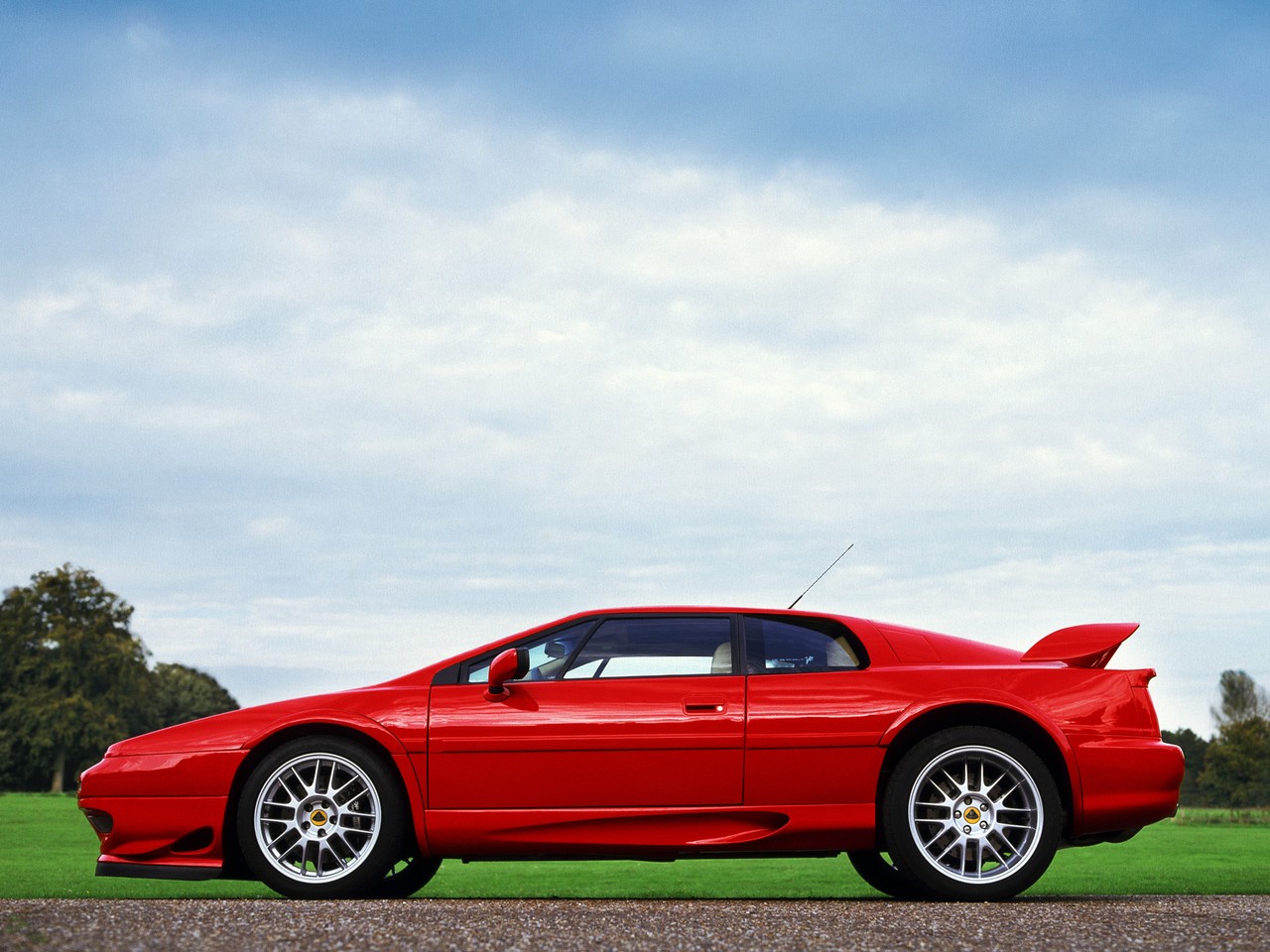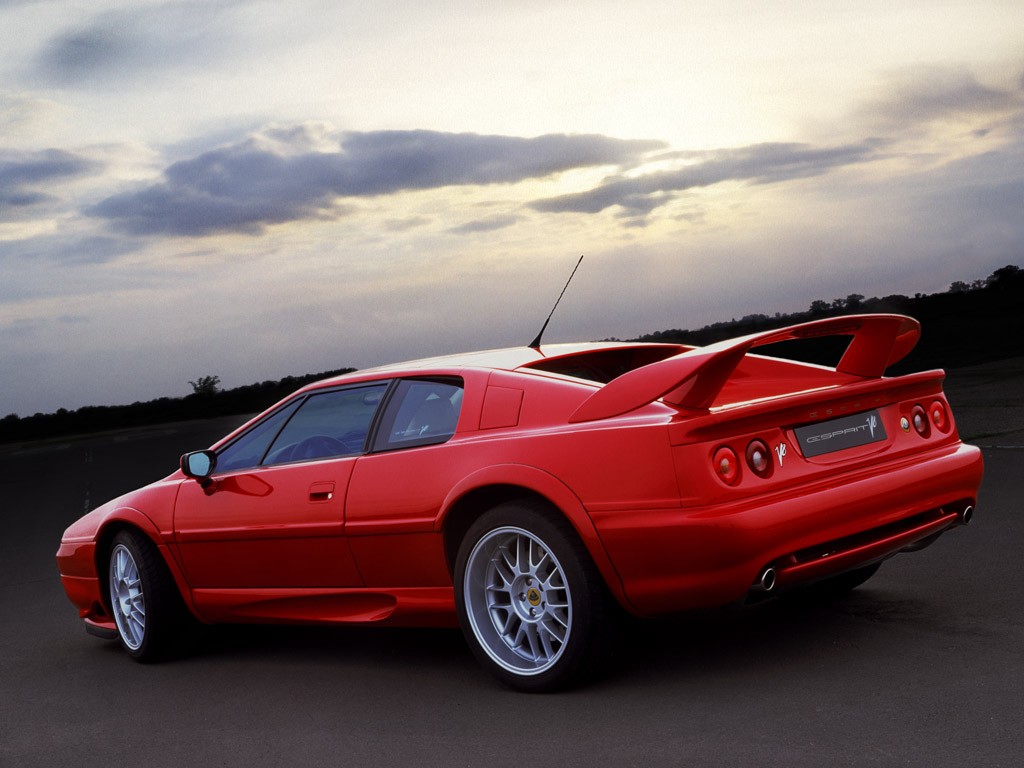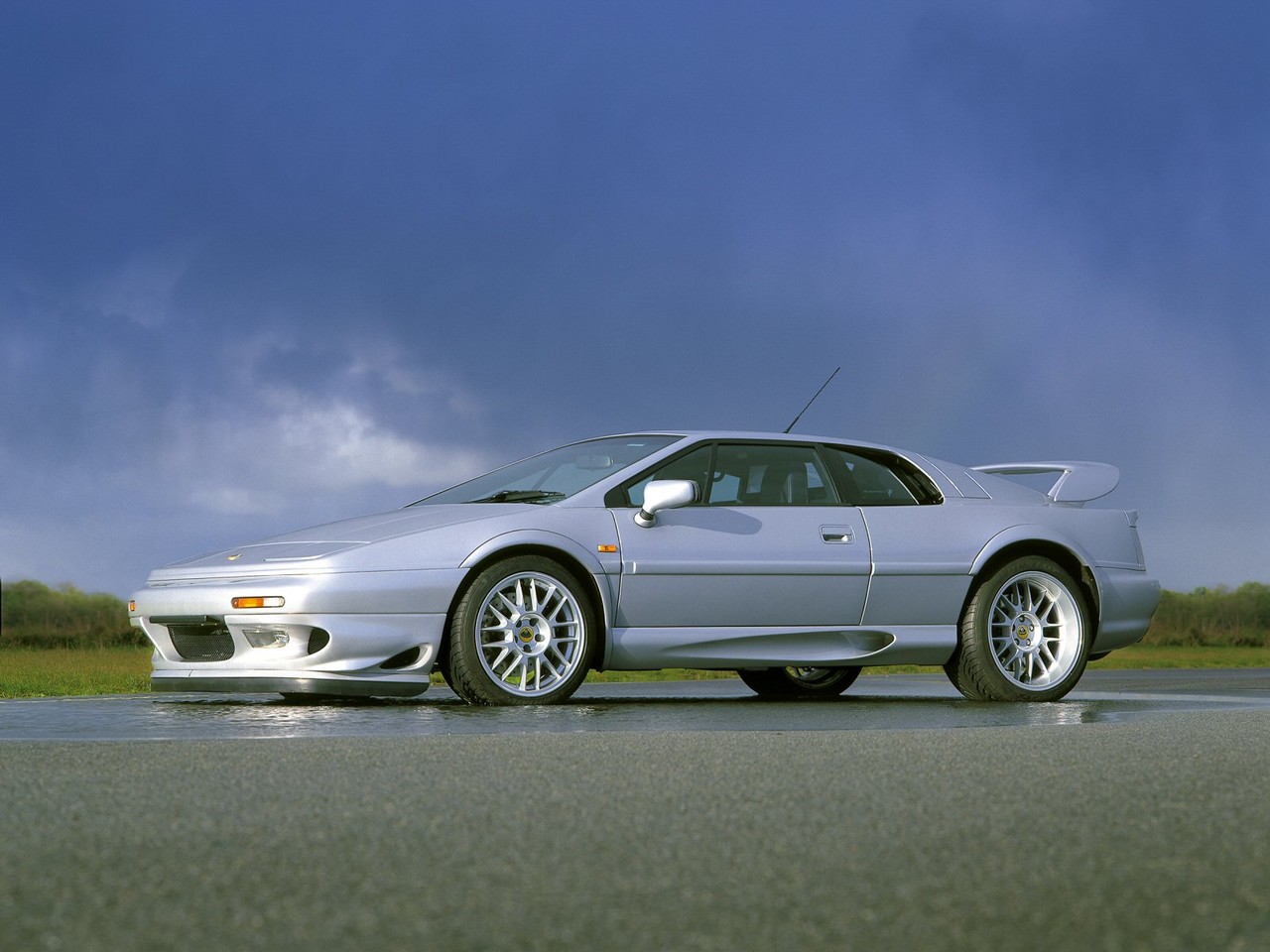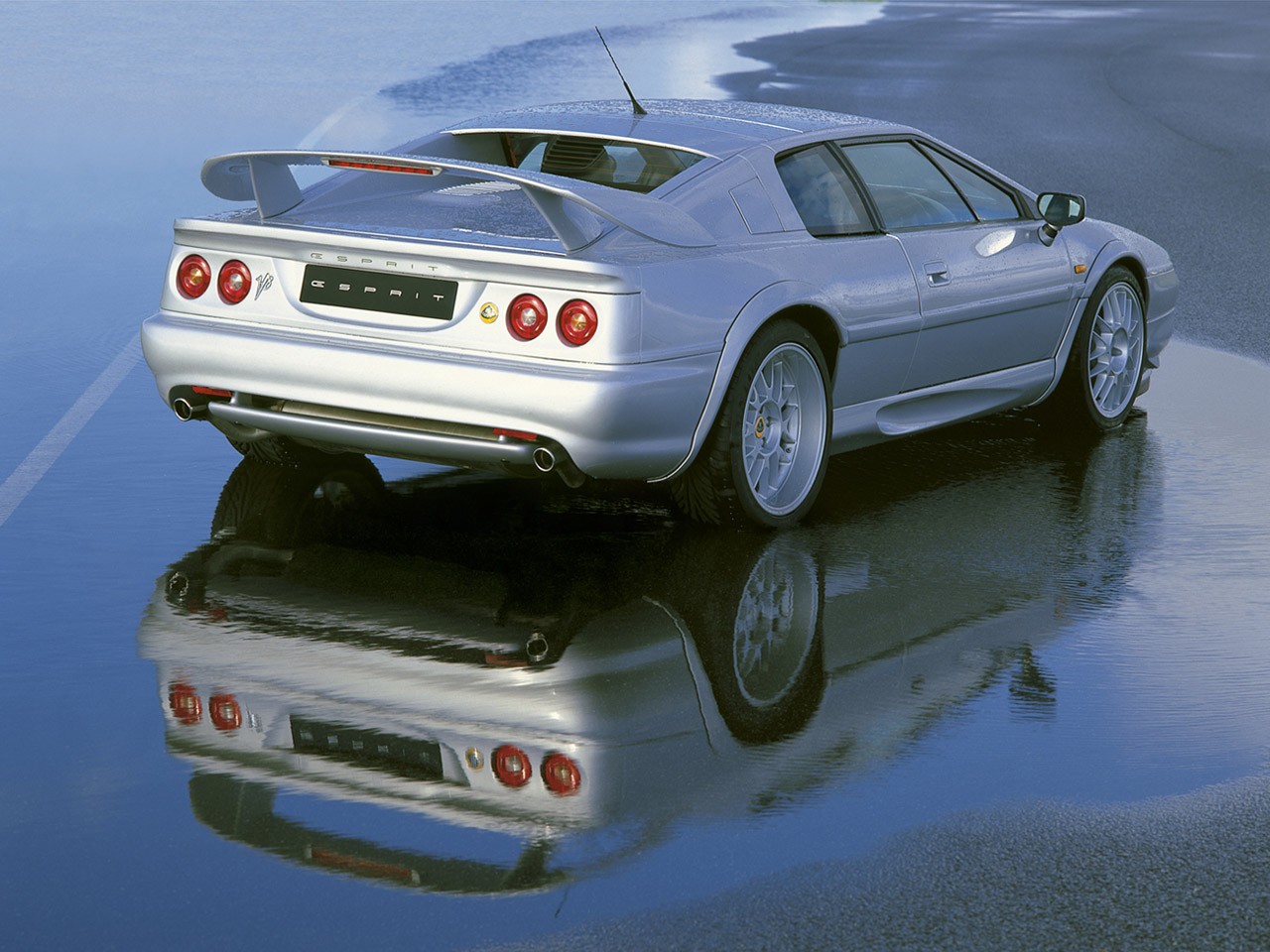
- Excellent ride/handling balance
- Accurate steering has great feel
- Controllable power oversteer
- Turbo lag for 2.2-litre engine
- Gear change lacks precision
- Cramped, dated interior
- High maintenance costs
Overview
Released in March 1993, the Lotus Mk.5 Esprit was a mid-engined, two-seat coupe. Manufactured in Hethel, England, the rear-wheel drive Esprit range initially consisted of the S4 variant which was powered by a 2.2-litre turbocharged four-cylinder petrol engine. This engine was improved for the S4s (released in 1995) and, in 1996, a V8 variant was released with a 3.5-litre twin-turbocharged V8 petrol engine. The full Mk.5 Esprit range is given in the table below.
Engines
Of the engines,
- For the S4, the 2.2-litre four-cylinder petrol engine had an aluminium alloy block and cylinder head, a water-cooled Garrett T3 turbocharger with integral wategate (providing boost pressure of 12.4 psi), double overhead camshafts, four valves per cylinder and a compression ratio of 8.0:1;
- For the S4s, changes to this engine included fitment of the Garrett T3/60 turbocharger with a larger compressor wheel, increased boost pressure (14.5 psi) a modified cylinder head, enlarged inlet valves, an increased capacity oil sump and a revised electronic control module (ECM); and,
- For the Esprit V8, the 3.5-litre petrol V8 had an aluminium alloy block and cylinder head, twin Garrett T3/60 turbochargers (providing boost pressure of 7.25 psi), double overhead camshafts per cylinder bank, a flat pane crankshaft, four valves per cylinder and a compression ratio of 8.0:1.
Both engines were mated to Renault’s UN1 five-speed manual transmission; for the V8, the transmission had a thicker single-piece input shaft to cope with the engine’s torque.
Chassis and dimensions
With a steel backbone chassis and fibreglass body, the Esprit S4 was 4369 mm long, 1867 mm wide, 1150 mm tall and had a 2420 mm long wheelbase. The GT3 and V8 variants, however, were 45 mm longer (at 4414 mm long) and 16 mm wider (1883 mm).
Suspension
The Esprit had double wishbone front suspension and independent rear suspension with upper and lower transverse links and radius arms.
| Years | Engine | Trans. | Peak power | Peak torque | |
|---|---|---|---|---|---|
| Esprit S4 | 1993-96 | 2.2-litre turbo petrol I4 | 5sp man. | 197 kW at 6500 rpm | 354 Nm at 3900 rpm |
| Esprit S4 Anniversary | 1997 | 2.2-litre turbo petrol I4 | 5sp man. | 197 kW at 6500 rpm | 354 Nm at 3900 rpm |
| Esprit S4s | 1995-96 | 2.2-litre turbo petrol I4 | 5sp man. | 224 kW at 7000 rpm | 394 Nm at 3600 rpm |
| Esprit GT3 Speedmaster/S | 1997 | 2.2-litre turbo petrol i4 | 5sp man. | 224 kW at 7000 rpm | 394 Nm at 3600 rpm |
| Esprit V8 | 1996-02 | 3.5-litre twin-turbo petrol V8 | 5sp man. | 260 kW at 6500 rpm | 400 Nm at 4250 rpm |
Safety equipment
Standard safety equipment for the Esprit S4 included a driver’s airbag and ABS.
The Esprit S4s and Esprit V8 were further equipped with a front passenger airbag.
Features
Esprit S4
Standard features for the Esprit S4 included 17-inch Lotus styled S-spoke alloy wheels wheels, 215/40 ZR17 front and 245/45 ZR17 rear Goodyear Eagle GS-A tyres, a four speaker sound system, air conditioning, Connolly leather upholstery, front fog lights, central locking, power windows and heated mirrors, sunroof, tinted windows and a Megamoss security system (alarm and immobiliser).
Esprit S4 Anniversary
The S4 Anniversary models were standard S4 vehicles that were manufactured in late 1993 and early 1994. These vehicles were originally shipped to Malaysia though delays resulted in them being delivered to Australia in 1997 and rebadged as ‘S4 Anniversary’ vehicles. Since the Esprit S4 had been superseded by the Esprit S4s, these vehicles were sold at a significant discount to that variant.
Esprit S4s
Compared to the S4, the S4s could be identified by its larger wheelhousings, wheelarch spats and rear aerofoil (as per the Esprit Sport 300). In addition to its more powerful engine, the S4s had revised springs, dampers and wider OZ Futura three-piece alloy wheels with 235/40 ZR17 front and 285/35 ZR18 rear Michelin tyres.
Inside, the Esprit S4s introduced Caerbont instruments and walnut veneers for the instrument panel and door trim. Standard features for the S4s were also extended to include a four-disc CD changer and footwell lamps.
Esprit GT3 Speedmaster/GT3 S
Released in March 1997, the GT3 Speedmaster (also known as the GT3 S) was unique to Australia. Since the standard Esprit GT3 only had European Type Approval, it could not be supplied to Australia. Instead, Lotus supplied the GT3 Speedmaster/S which combined the mechanical package of the S4s with an updated GT3 interior (with Senotex instrument masks, a body-coloured composite gear lever shroud and aluminium gear lever knob).
Esprit V8
Released in November 1996, the Esprit V8 required chassis modifications to accommodate its 3.5-litre twin-turbo V8 engine. Visually, the Esprit V8 could be identified by its restyled front spoiler and one-piece road wheels.
The Esprit V8 was fitted with 17-inch AWI six- spoke alloy wheels with 235/40 ZR 17 front and 285/35 ZR18 rear Dunlop SP Sport 9000 tyres, while its braking package consisted of 296 mm front brake discs with four-piston Brembo calipers and 300 mm rear discs with two-piston Brembo calipers.
From February 1997 (i.e. VIN V 5289), the Esprit V8 was fitted with a new lightweight flywheel, low-inertia twin-plate clutch, cast iron clutch housing and a recalibrated ECM.
October 1997: Esprit V8 update
In October 1997, the interior was revised with a more compact instrument binnacle containing four gauges, a smaller centre console, revised climate control with rotary selector switches and face-level vents; and Elise-style push switches; the boost and oil temperature gauges were also omitted. Visually, these models could be identified by their restyled rear aerofoil.
Mechanical changes, however, included a new low-effort clutch release with new hydraulic cylinders, a revised clutch fork and stiffer alloy clutch housing, a revised twin-cable gearchange mechanism, modified transmission selector cross-shaft and a new Kelset-Hayes ABS control unit (EBC 430).
Related links
